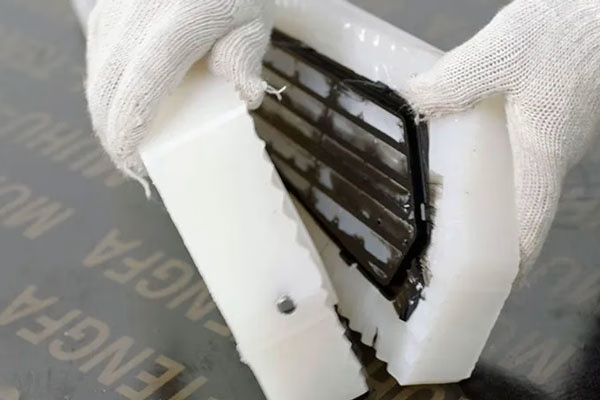Are you familiar with the vacuum casting process?
It is the most economical way to make a prototype. If you are as clueless as I am about this prototyping technique, this article will provide us with some clarity.
Here is an in-depth look at what vacuum casting is all about and the processes involved in using this manufacturing technique.
What is Vacuum Casting?
Vacuum casting is a plastic molding process that can be used to manufacture high-quality parts. It is a multi-step process that involves creating a silicone rubber mold from a master pattern. This silicone mold is cured at high temperature and is cut in two. After removing the master pattern, the hollow impression left serves as the mold. After pouring a plastic resin into the mold, it is put in the vacuum chamber for curing.
The combination of pressure and temperature ensures that there are no air bubbles trapped inside the mold. This results in a high-quality part even with intricate details and undercuts. Vacuum casting is ideal in rapid prototyping processes that require plastic or rubber parts.

Vacuum casting products
Distinct Characteristics of Vacuum Casting
Vacuum casting is one of the most cost-effective ways to produce high-quality but low-volume parts with similar results as in the injection molding process. These are some of its distinct advantages.
High Precision on the Finished Part
Since you are using the master pattern in creating the silicone mold, it takes its precise details down the letter. As a result, the prototypes will look similar to the original product, even for parts with complex geometry. There is no other manufacturing technique that is as detailed as vacuum casting.
High-Quality Product
You can ensure that the part produced through vacuum casting has the finest quality. In addition to the absence of trapped bubbles, vacuum casting allows for use of the material as in the final product. It offers a wider choice when it comes to hardness, rigidity, and flexibility for a better product.
Lower Production Costs
Compared to other manufacturing methods, vacuum casting is more economical. The use of silicones as a mold is cheaper than metal like steel or aluminum without affecting the final products. It also allows you to produce more products from the mold.
Quick and Easy
Aside from being cost-effective, vacuum casting is also fast. The process takes less time in finishing a product than other methods. This is a great alternative when you are working to meet a deadline.
Applications of the Vacuum Casting Method
There are many applications where you can use vacuum casting. Some of them are included here.
- Food and Beverage – It is used to make packaging for final products like plastic bottles and tins. The process can make much product faster and is preferred for customized packaging in medium quantity.
- Commercial Products – Think of sunglasses, mobile cases, pens, and many more that we see everyday.
- Household Products -Many household products use vacuum casting, including cosmetics, detergents, and food processing.
Vacuum casting is more economical compared to injection molding or 3D printing. Using this technique allows you to produce more products at less cost.
